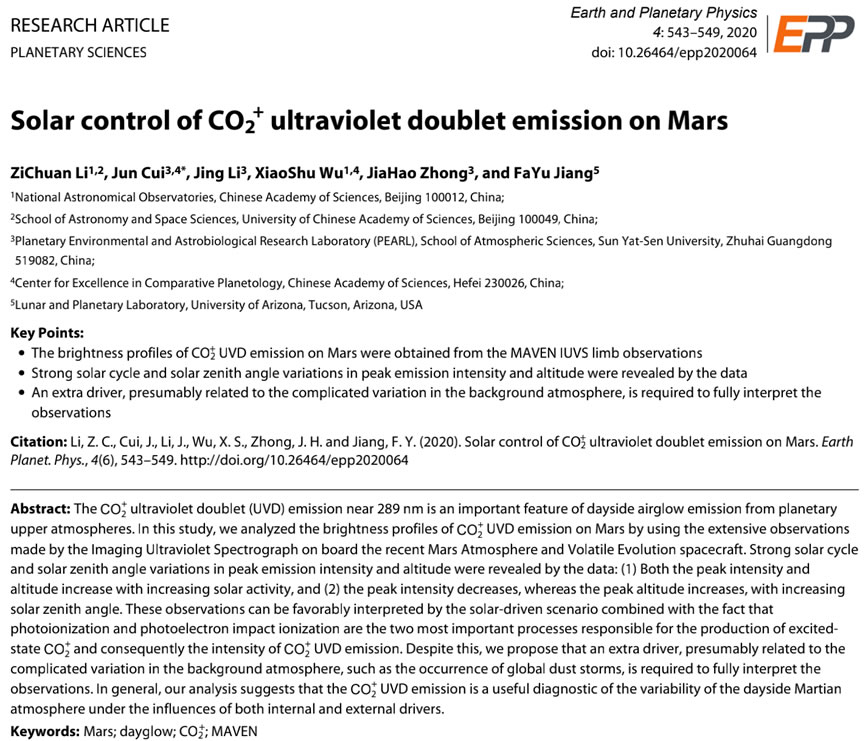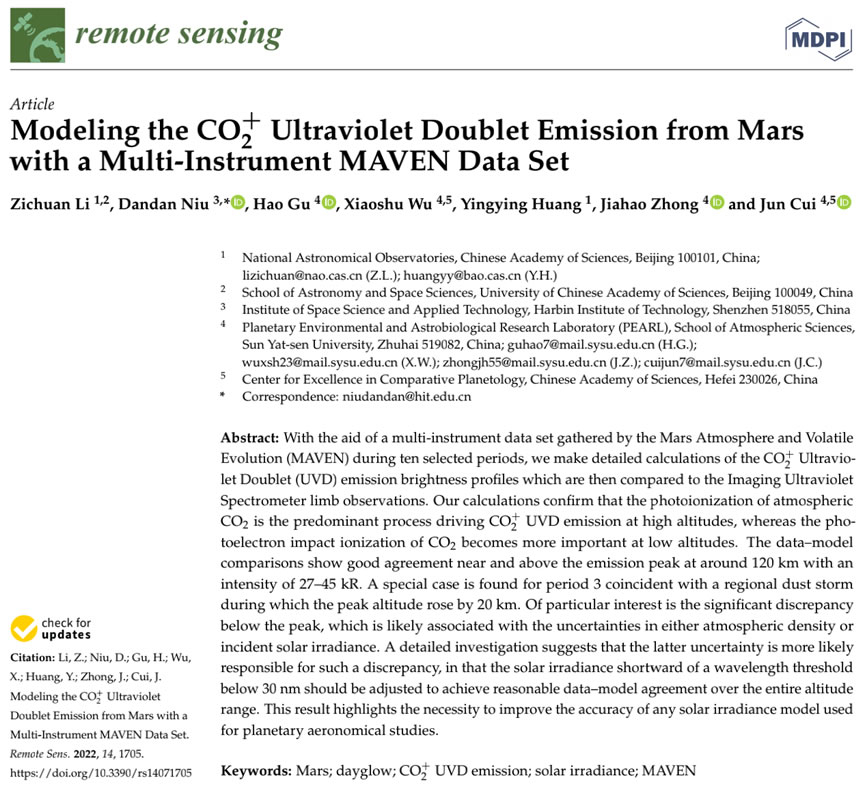Characteristics of CO2+ Ultravoilet Doublet dayglow on Mars
The study of airglow radiation is an important means to understand the physical and chemical processes of the Martian atmosphere. We comprehensively use the rich data provided by the MAVEN (Mars Atmosphere and Volatile Evolution) and the classic photo-chemical model of the upper atmosphere of Mars, from the two aspects of observation and simulation. The observations of CO2+ UVD radiation show that the solar activity and the solar zenith angle dominate the variation of its peak intensity and peak height, and further simulations show that photoionization of CO2 and photoelectron impact ionization of CO2 are the two basic processes that produce this radiation. At the same time, the deviation between the observational data and the simulation results indicates that the widely used Martian atmospheric incident solar ultraviolet spectrum FISM-M (Flare Irradiance Spectral Model version 2) needs to be further optimized in the shorter wavelength band (< 20 ~ 30 nm). In addition, we found that extreme atmospheric conditions on Mars, such as dust storm events at low altitudes, can have a significant impact on CO2+ UVD radiation at upper atmosphere.
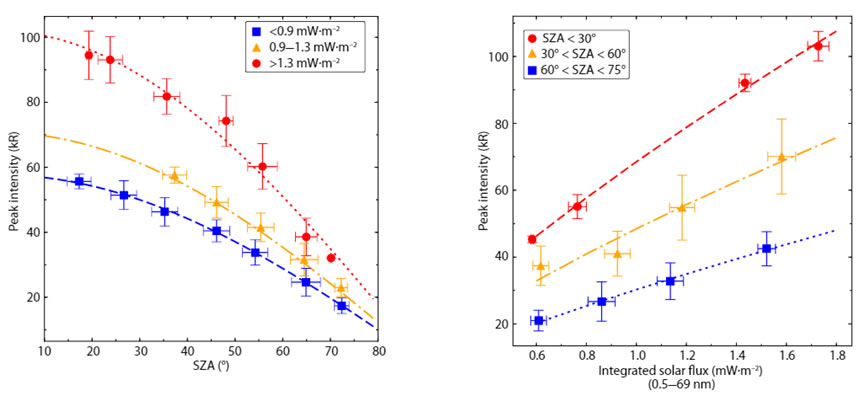
Fig1. CO2+ UVDpeak intensity as a function of solar zenith angle and integral flux of ionizing radiation (0.5-69nm).
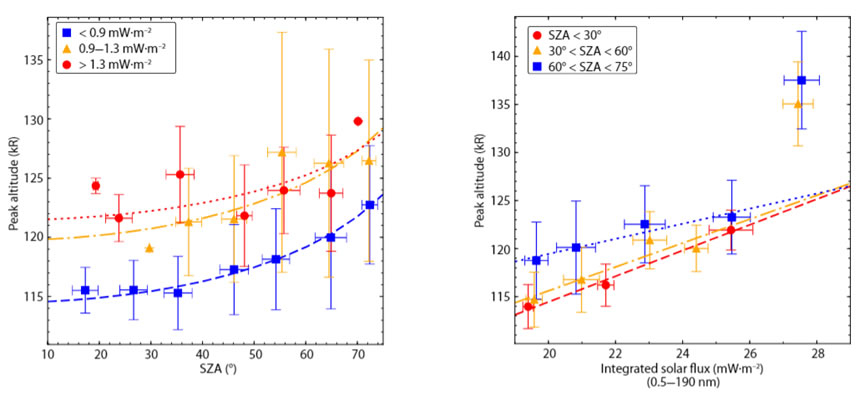
Fig2. CO2+ UVDpeak height as a function of solar zenith angle and integral flux of ionizing radiation (0.5-69nm).
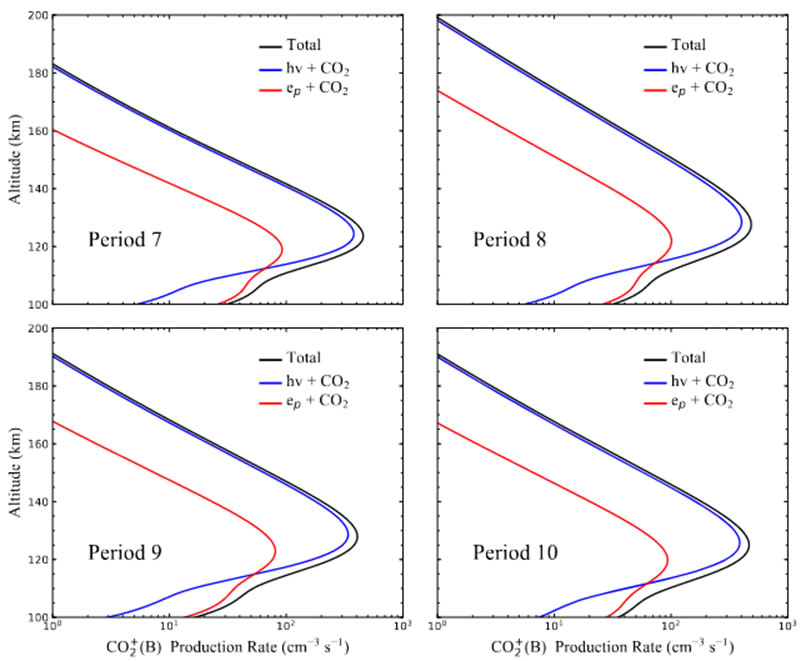
Fig3. CO2+(B)production rate under four periods.
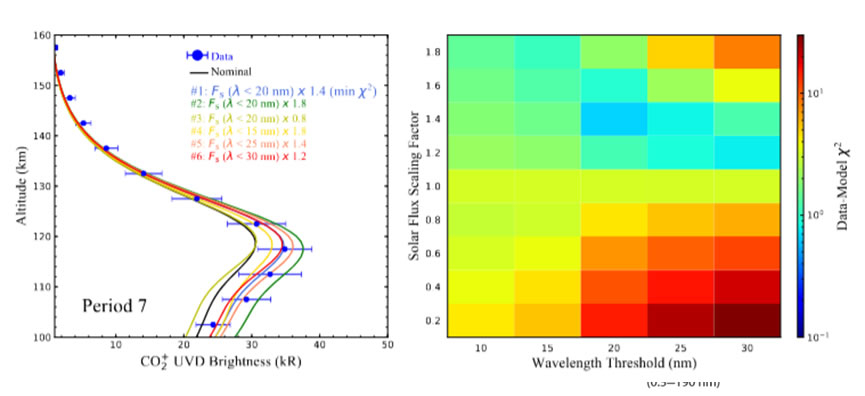
Fig4. The effect of solar radiation on the simulation results of CO2+ UVD radiation based on the FISM-2 model。
